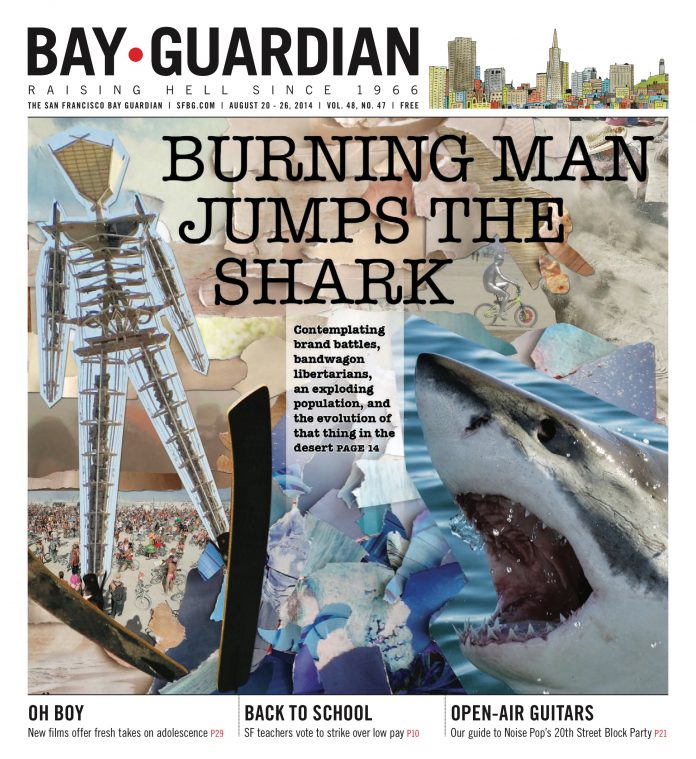EDITORIAL Burning Man and San Francisco have developed a close and symbiotic relationship in recent years, with members of the Board of Supervisors doing whirlwind VIP tours of the playa, burner artworks temporarily placed on city land, and event-sponsoring Black Rock City LLC supporting the Mayor’s Office campaign to transform the Tenderloin into a nascent arts and technology district.
In many ways, it’s been good to see city officials finally welcome burners and their art and culture back from the desert, where local authorities helped cast it into exile in 1990 after its early years on Baker Beach. But there’s also something a little disturbing about the mutually beneficial relationship that has formed between the ultimate political insiders and outsiders.
Then-Mayor Gavin Newsom helped install Burning Man artworks in Hayes Valley and Civic Center Plaza starting in 2005, finally giving Burning Man official city recognition and bumping up his own cultural cred. Mayor Ed Lee has continued the trend and helped forge closer city ties with the LLC, even helping it find a new headquarters and trotting it out in 2011 as a beneficiary of its Mid-Market Tax Exclusion Zone, along with Twitter.
When Lee and Board of Supervisors President David Chiu shared a burner-built stage with Burning Man founder Larry Harvey in August 2011 to announce the creation of a new nonprofit, The Burning Man Project (see “Beyond the playa,” 8/9/11), it was a kumbaya moment.
“Burning Man has been a wonderful contributor to our central Market cultural district,” Lee said told the colorful crowd, while Harvey said, “Working with the city of San Francisco, we can do many things.”
But there was a problem with the rhetoric then that has only become more clear since: It’s exclusivity masked as egalitarianism. The city’s Central Market Partnership program was used as a fig leaf to cover the designs that developers, landlords, Realtors, and tech companies had for once-low-rent mid-Market properties. And so far, The Burning Man Project seems to have benefited Harvey and the LLC board members more than artists or city residents.
Mid-Market isn’t a thriving arts district. And Burning Man operates the same way it always has. What San Francisco and Burning Man both need right now is to drop the gimmicks and deceptive rhetoric and to get real with their communities about what they’re doing, why, and who’s going to benefit from their plans.
The “San Francisco values” that have infused this city’s culture in its best moments have always been communitarian, based on principles of openness and inclusion. Process matters. Progress isn’t measured just by what gets done, but how it happens.
Burning Man and San Francisco are both experiencing rapid growth and its attendant growing pains, and the leaders of both need to remember and respect everyday citizens as they pursue their grand visions.

